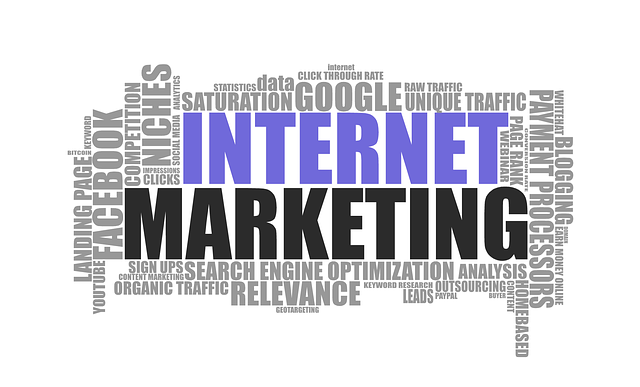AI Business Robotic Process Automation (RPA) revolutionizes food photography by automating tasks like image capture, data entry, and quality checks, speeding up production times and ensuring visual consistency. Integrating AI further enhances capabilities with defect detection, item identification, and optimal setting adjustments. This technology promises to make high-quality food photography more accessible, faster, and cost-effective, aligning with the demand for visually appealing content in the digital era. By optimizing lighting conditions, textures, and flavors, AI-driven RPA creates engaging visual narratives that drive customer engagement and sales for restaurants. Implementing this optimization involves strategic steps: investing in diverse datasets, integrating suitable software, and providing staff training.
“Discover the transformative power of Artificial Intelligence (AI) in the realm of business process automation, particularly within the captivating world of food industry photography. This article explores ‘AI-driven food photography optimization’, shedding light on how RPA (Robotic Process Automation) enhances efficiency and creativity. From understanding the fundamentals to uncovering implementation strategies, we delve into the benefits that AI brings to the table, revolutionizing the way food is captured and presented.”
- Understanding AI Business Robotic Process Automation (RPA)
- The Role of AI in Food Photography Optimization
- Benefits and Implementation Strategies for AI-Driven RPA in Food Industry Photography
Understanding AI Business Robotic Process Automation (RPA)

AI Business Robotic Process Automation (RPA) is a transformative technology that leverages artificial intelligence to automate repetitive, rule-based tasks across various industries, including food photography. By mimicking human actions through software robots, RPA streamlines workflows and boosts efficiency. In the context of AI-driven food photography optimization, RPA can be employed to automate processes such as image capture, data entry, and initial quality checks. This not only speeds up production times but also ensures consistency in terms of lighting, composition, and other visual elements crucial for high-quality food photography.
The integration of AI further enhances RPA capabilities in food photography. AI algorithms can analyze images to detect defects, identify specific food items, and even adjust settings for optimal visualization. For instance, AI-driven systems can automatically crop or enhance images based on predefined criteria, saving time and effort while maintaining or even improving the quality of final photographs. This technology promises to revolutionize food photography by making it more accessible, faster, and cost-effective, thereby catering to the growing demand for visually appealing and consistent food content in today’s digital landscape.
The Role of AI in Food Photography Optimization

In the realm of culinary arts, presentation is everything, and AI-driven food photography optimization plays a pivotal role in enhancing visual appeal and attracting discerning diners. By leveraging advanced algorithms, this technology ensures that each dish is captured under the most flattering lighting conditions, highlighting textures and flavors that might otherwise go unnoticed. Through precise camera settings adjustments and strategic composition, AI systems can create images that not only capture the essence of the food but also evoke a sense of desire in potential customers.
Moreover, AI-driven optimization goes beyond aesthetics to consider practical aspects like consistent lighting across different shots, ensuring that every image is usable for various marketing purposes. This efficiency saves time and resources for restaurants and food brands, allowing them to focus on what they do best—creating exquisite culinary experiences. With the power of AI, food photography becomes a strategic tool to engage customers, build appetites, and ultimately drive sales, transforming simple images into powerful visual narratives that sell.
Benefits and Implementation Strategies for AI-Driven RPA in Food Industry Photography

The integration of AI-driven RPA in the food industry, particularly for photography, offers significant advantages that can revolutionize visual content creation. By automating repetitive tasks such as image cropping, resizing, and basic editing, AI models can drastically enhance efficiency in food photography workflows. This technology enables faster production of high-quality images, ensuring consistent branding and visual appeal across diverse marketing materials. For instance, AI algorithms can analyze recipes to predict the best lighting and composition for showcasing dishes, thus saving time and resources previously spent on manual adjustments.
Implementing AI-driven food photography optimization involves several strategic steps. Firstly, businesses should invest in robust datasets that accurately represent their visual content needs. Training AI models with diverse, high-quality food images ensures accurate and creative outputs. Next, integrating AI tools into existing photography infrastructure is crucial. This might involve selecting suitable RPA software compatible with current workflows and equipment. Additionally, providing adequate training to staff on the use of these new systems fosters a smooth transition, maximizing the benefits of AI-driven RPA in food photography.
AI-driven robotic process automation (RPA) is transforming the food industry by optimizing photography processes, from capturing high-quality images to enhancing and managing digital assets. By leveraging machine learning algorithms, AI can significantly improve efficiency, reduce costs, and enhance visual consistency in food photography. As the technology advances, businesses can expect even more innovative applications, ensuring a competitive edge in this dynamic market. Implementing AI-driven RPA strategies allows companies to focus on creative vision while automating repetitive tasks, ultimately elevating the overall quality and impact of their food photography.
